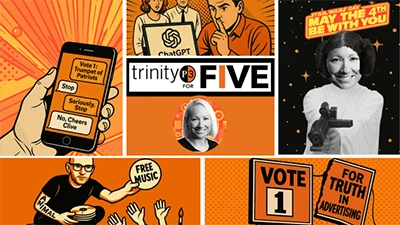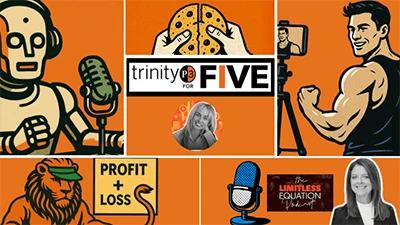TrinityP3 for FIVE Newsletter
The five essential stories of the week and why they matter

Each week TrinityP3 curates the TrinityP3 for FIVE newsletter which gives you the five things you should read this week. The newsletter is a digest which comes every Sunday and gives you five minutes of reads to prepare you for the week ahead.
Our Latest Podcast:

Managing Marketing: Putting Values In Action By Bridging Purpose And Practice
Chloe Hooper, founder and CEO of Barefeet Consultancy discusses the importance of redefining business purpose and values, the journey of self-belief, and the significance of authenticity in both personal and professional realms. Chloe shares her transition from the agency landscape to consultancy, emphasizing the need for organizations to truly embody ...









